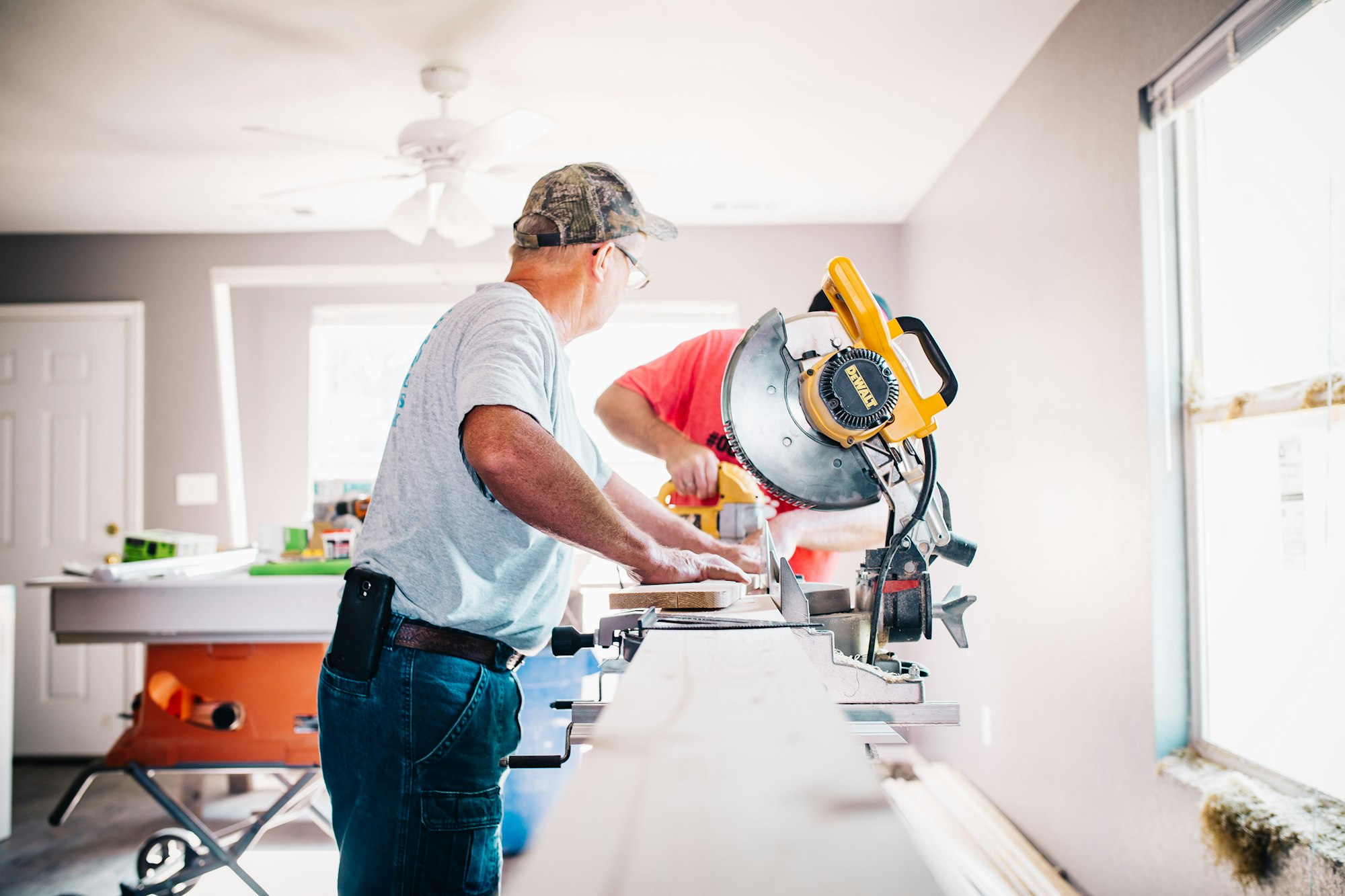Aging Gracefully at Home: Understanding Why Seniors Prefer to Age in Place
Explore why seniors choose to age in place, embracing the familiarity and comfort of their own homes over moving to retirement communities. This insightful look delves into the emotional attachments, independence, and practical benefits of living in a well-loved and adapted home environment

Introduction
In recent years, the concept of "aging in place" has become a cornerstone of retirement planning and eldercare. More seniors than ever are choosing to spend their golden years in the comfort of their own homes. This article delves into the myriad reasons why aging in place is becoming the preferred choice for older adults, and how various services and modifications are supporting this trend.
The Lure of Familiar Surroundings
One of the primary reasons seniors choose to age in place is the emotional attachment to their homes. These environments are imbued with memories and a sense of security that cannot be easily replicated in a retirement community or nursing home.
The decision of older adults to age in place, remaining in their own homes rather than transitioning to retirement communities or nursing homes, is deeply influenced by the lure of familiar surroundings. This preference underscores the profound emotional and psychological impact that a familiar environment holds for seniors.
Emotional Attachments and Memories
Nostalgic Bond: Many seniors have spent decades in their homes, where they've experienced life's milestones and everyday moments. This longevity creates a nostalgic bond that's hard to break.
A Repository of Memories: Homes are often seen as repositories of cherished memories, where every corner and object can evoke past experiences and family history, enriching the daily life of an elderly person.

Sense of Security and Comfort
Safety in Familiarity: Familiar surroundings offer a sense of security and comfort that is especially important as one ages. Knowing every nook and cranny of their home provides a sense of control and safety.
Tailored Living Spaces: Over the years, seniors have tailored their homes to their preferences and needs, making these spaces uniquely suitable for their lifestyle and potentially easier to navigate than a new, unfamiliar environment.
Impact on Mental Health
Reduced Stress and Anxiety: Familiar environments can significantly reduce stress and anxiety levels in seniors, particularly those who may be dealing with health issues or cognitive impairments.
Preservation of Identity: Staying in their own homes allows seniors to maintain a sense of self and continuity, which is vital for their mental well-being and can be disrupted by moving to a new place.
Community and Social Connections
Maintaining Social Networks: Aging in place keeps seniors connected to their established community networks. This connection is crucial for emotional support and maintaining social ties.
Proximity to Familiar Places: Living in their own home means being close to familiar places like local shops, parks, churches, and senior centers, which plays a significant role in their everyday tasks and social life.
The lure of familiar surroundings is a key factor driving the choice of many older adults to age in place. It encompasses emotional attachments, a sense of security, mental health benefits, and the ability to maintain social connections, all of which contribute significantly to the quality of life for seniors. With the support of in-home care services and home modifications, aging in place becomes a viable and attractive option for many.
Financial and Practical Considerations
Cost-Effective Living: For many seniors, the financial implications of moving to a retirement community or nursing home are significant. Aging in place can often be a more economical option, especially when considering the roles of other health insurance, social security benefits, and potential government programs in offsetting costs.
To age in place is a growing trend.
Health Benefits of Aging in Place
Staying in a familiar environment can have positive effects on the health of seniors. The comfort of home can lead to better mental health, reduced stress, and a sense of belonging, all of which contribute to overall well-being.
Family Dynamics and Caregiving
Aging in place also allows for more flexible caregiving arrangements. Family members can be more involved in the care process, leading to stronger family bonds and more tailored care.

Addressing Nutrition and Health Care Needs
Home care services often include meal preparation and nutrition programs, ensuring that seniors receive balanced diets. Regular doctor visits and health care services can be more easily managed in the familiar setting of one's home.
Challenges and Solutions
While aging in place offers many benefits, it also comes with challenges such as managing health problems, ensuring safety, and maintaining a home. Solutions such as in-home caregiving services, community living options for social interaction, and home health care services are vital in addressing these issues.
Aging in place represents a conscious decision by many seniors to live their later years in the comfort of their own homes. It's a choice that offers independence, emotional well-being, and a connection to familiar surroundings, supported by a range of services and resources. As the population ages, understanding and facilitating this preference will become increasingly important for families, healthcare providers, and communities.
Home Modifications and the Role of Certified Aging-in-Place Specialists in Supporting Seniors
Aging in place, the preference of many seniors to live in their own homes as they grow older, often requires specific home modifications to ensure safety, comfort, and accessibility. Given that most homes are designed for younger, able-bodied individuals, adapting a living space to meet the needs of older adults is crucial. Certified Aging-in-Place Specialists (CAPS) play a pivotal role in this process. Their expertise helps identify and implement the necessary changes to create an environment conducive to aging safely and independently. This article delves into the various home modifications needed and the importance of consulting CAPS professionals.

Understanding the Need for Home Modifications
Addressing Mobility Challenges: As seniors age, mobility can become a challenge. Modifications are often needed to accommodate the use of walkers, wheelchairs, or simply to make moving around the home safer and easier.
Preventing Falls: Falls are the leading cause of injury among seniors, often leading to a loss of independence. Adapting the home environment can significantly reduce this risk.
Key Areas of Modification
Bathrooms: This is a critical area for modifications as it poses high risks for slips and falls. Installing grab bars, non-slip flooring, walk-in tubs, and shower seats can enhance safety. Raised toilet seats and handheld showerheads are also beneficial.
Kitchens: Lowering countertops and cabinets, installing pull-out shelves, and using lever-handled faucets can make kitchens more accessible and easier to use.
Entrances and Exits: Ramps or stairlifts can replace stairs at entryways for those with mobility issues. Ensuring well-lit, obstacle-free pathways is also essential.
Flooring: Replacing high-pile carpets with smoother, slip-resistant flooring can prevent tripping and make movement easier.
Lighting: Adequate lighting is vital, especially in hallways, staircases, and bathrooms, to prevent falls and help those with deteriorating vision.
The Role of Certified Aging-in-Place Specialists
Expert Assessment and Recommendations: CAPS professionals are trained to assess the specific needs of seniors and recommend appropriate modifications. They consider not only the current requirements but also anticipate future needs.
Ensuring Compliance with Standards: CAPS ensure that modifications meet all relevant safety standards and building codes, which is critical for both functionality and resale value.
Customization to Individual Needs: Every senior's needs are unique, and CAPS professionals are skilled in customizing modifications to fit individual lifestyles and health conditions.

Beyond Physical Modifications: Technology and Safety
Smart Home Technologies: Innovations like emergency response systems, smart thermostats, and voice-activated devices can further support seniors in aging in place, providing convenience and enhancing safety.
Regular Maintenance: CAPS professionals can also advise on the importance of regular home maintenance, such as checking smoke detectors and maintaining heating and cooling systems, to ensure a safe living environment.
Financial Considerations and Assistance
Budgeting for Modifications: While some modifications can be costly, CAPS can help seniors and their families plan and budget effectively.
Access to Funding and Assistance: They can also provide information on potential financial assistance options, such as government programs, grants, and insurance coverage.
Home modifications are an essential aspect of enabling seniors to age in place safely and comfortably. The expertise provided by Certified Aging-in-Place Specialists is invaluable in this process. By tailoring homes to meet the evolving needs of older adults, these modifications not only enhance safety and accessibility but also help preserve the independence and quality of life of seniors, ensuring they can enjoy their home environment for as long as possible.
Aging In Place Requires Pre Planning
The Pivotal Role of In-Home Care and Adaptations in Facilitating Aging in Place
As the preference for aging in place continues to grow among seniors, the role of in-home care services and home modifications has become increasingly significant. These services and adaptations are essential in creating a safe, comfortable, and functional environment that enables older adults to live independently in their homes for as long as possible. This article explores how in-home care and home adaptations are transforming the aging experience, making it more feasible and desirable for seniors to age in place.
In-Home Care Services: Personalized Support in the Comfort of Home
Comprehensive Care: In-home care encompasses a wide range of services tailored to meet the unique needs of each senior. This includes personal care assistance, such as help with bathing and dressing, to more specialized medical care provided by home health care professionals.
Preserving Independence: One of the key benefits of in-home care is that it allows seniors to maintain their independence while receiving the necessary support. This balance is crucial in enhancing their quality of life and overall well-being.
Flexibility and Customization: In-home care services can be customized and adjusted as the needs of the senior change over time. This flexibility ensures that the care plan always aligns with the individual's current requirements, whether it's help with everyday tasks, medical care, or companionship.
Support for Family Caregivers: In-home care also provides much-needed respite for family members who may be involved in caregiving. This support is vital in preventing caregiver burnout and ensuring that the care provided is sustainable in the long term.

Home Health Care Services: Addressing Medical Needs
Professional Medical Care at Home: Home health care services bring professional medical care into the homes of seniors. This includes nursing care, physical therapy, and management of health conditions, ensuring that seniors receive comprehensive medical attention without the need to frequently visit hospitals or clinics.
Coordination with Health Care Providers: Home health care professionals work in coordination with the senior's doctors and health care providers, ensuring continuity of care and effective management of health issues.
Financial and Government Support for In-Home Care and Adaptations
- Insurance and Government Programs: Many in-home care services and home modifications can be covered by health insurance, long-term care insurance, or government programs such as those offered by Veterans Affairs and the Department of Housing and Urban Development.
- Community Resources: Local community resources and senior centers often provide assistance and guidance in accessing these services and making necessary adaptations to homes.
Conclusion
The combined impact of in-home care services and home modifications is profoundly reshaping the landscape of aging in place. By addressing both the medical and personal care needs of seniors, as well as ensuring their living environments are safe and accessible, these services are empowering more older adults to make the conscious decision to age in their own homes. As the demand for aging in place continues to rise, the role of these services and adaptations will become even more pivotal, offering seniors the support they need to live independently and with dignity in their later years.
Our Resources section can help you find the information and tools that you need. We have courses, videos, checklists, guidebooks, cheat sheets, how-to guides and more.
You can get started by clicking on the link below. We know that taking care of a loved one is hard work, but with our help you can get the support that you need.
Click here to go to Resources Section now!





